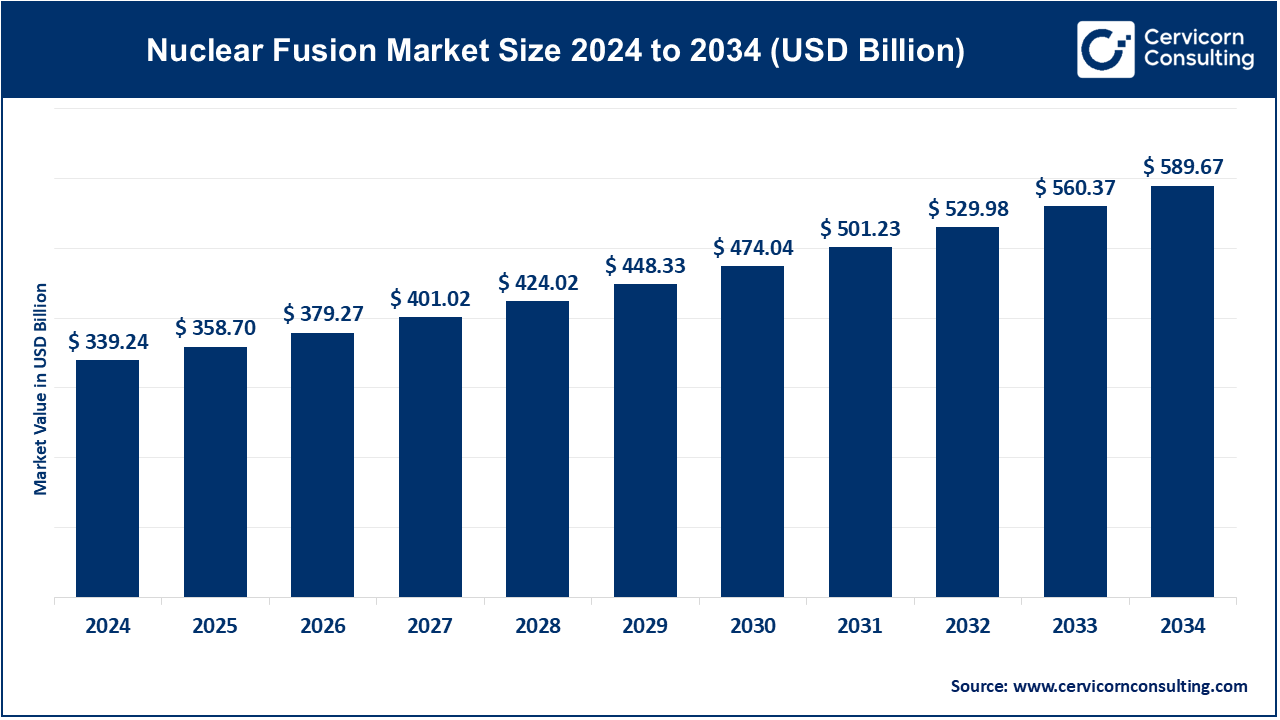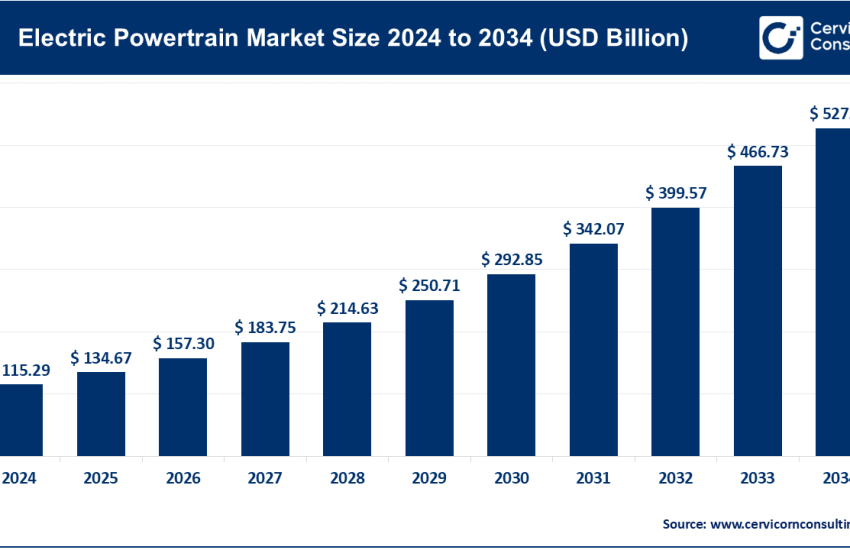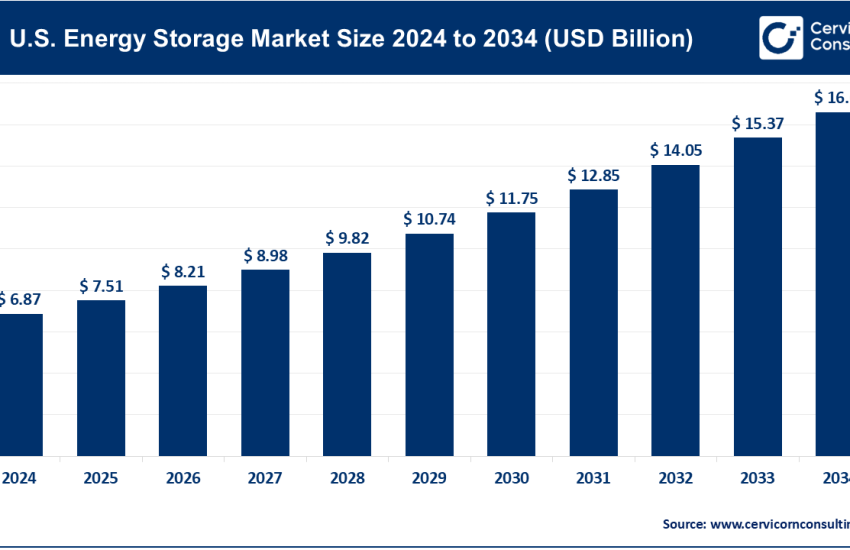Nuclear Fusion Market Growth, Innovations, and Future Outlook (2025-2034)
Nuclear Fusion Market Growth
The nuclear fusion market is experiencing significant growth, driven by technological advancements, increased private and public investment, supportive government policies, and growing demand for sustainable energy solutions. Key innovations in superconducting materials, magnetic confinement techniques, and plasma control systems are accelerating the path toward commercial fusion reactors. Furthermore, collaborations between governments, academia, and private companies are fostering an ecosystem that supports innovation and scalability.
What is the Nuclear Fusion Market?
The nuclear fusion market refers to the growing industry focused on the development, commercialization, and deployment of nuclear fusion technologies. Nuclear fusion, the process of combining light atomic nuclei to release vast amounts of energy, is considered the “holy grail” of energy production due to its potential for delivering virtually limitless, clean, and safe energy. This market encompasses a wide array of activities, including research and development (R&D), engineering, reactor design, materials innovation, and pilot projects, all aimed at making fusion energy commercially viable.
Why is the Nuclear Fusion Market Important?
Nuclear fusion holds the promise of addressing many of the world’s most pressing energy challenges. Unlike traditional nuclear fission, fusion does not produce long-lived radioactive waste, is inherently safe due to the absence of chain reactions, and uses abundant fuel sources like deuterium and tritium. Fusion energy could significantly reduce reliance on fossil fuels, help combat climate change, and meet the growing global demand for electricity. With energy security becoming a critical priority for nations worldwide, nuclear fusion represents a transformative solution for achieving a sustainable and resilient energy future.
Get a Free Sample: https://www.cervicornconsulting.com/sample/2332
Global Nuclear Fusion Market: Top Companies
1. ITER (International Thermonuclear Experimental Reactor)
- Specialization: Fusion research and large-scale experimental reactors
- Key Focus Areas: Magnetic confinement fusion using tokamak technology
- Notable Features: ITER is the largest international collaboration in fusion research, involving 35 nations. The project aims to demonstrate the feasibility of sustained fusion reactions and pave the way for commercial reactors.
- 2024 Revenue (approx.): Not applicable (government-funded project)
- Market Share (approx.): Leading global research initiative
- Global Presence: Headquartered in France with contributions from Europe, the US, China, India, Japan, South Korea, and Russia
2. General Fusion
- Specialization: Magnetized target fusion (MTF)
- Key Focus Areas: Developing commercial fusion reactors with cost-effective and scalable technology
- Notable Features: Focus on piston-driven compression technology to achieve fusion conditions
- 2024 Revenue (approx.): $200 million
- Market Share (approx.): 8%
- Global Presence: Based in Canada with operations in the US and Europe
3. TAE Technologies
- Specialization: Field-reversed configuration (FRC) reactors
- Key Focus Areas: Advanced particle physics and plasma science
- Notable Features: Patented advanced beam-driven fusion technology with long-term energy storage capabilities
- 2024 Revenue (approx.): $250 million
- Market Share (approx.): 10%
- Global Presence: Headquartered in the US with R&D centers globally
4. Tokamak Energy
- Specialization: Spherical tokamaks
- Key Focus Areas: Compact reactor designs and high-temperature superconductors (HTS)
- Notable Features: Pioneering modular fusion reactors with a focus on rapid commercialization
- 2024 Revenue (approx.): $180 million
- Market Share (approx.): 7%
- Global Presence: Based in the UK with collaborations in Asia and North America
5. Commonwealth Fusion Systems (CFS)
- Specialization: High-field magnetic confinement fusion
- Key Focus Areas: Developing commercial reactors using high-temperature superconducting magnets
- Notable Features: Collaboration with MIT to design compact and efficient fusion reactors
- 2024 Revenue (approx.): $300 million
- Market Share (approx.): 12%
- Global Presence: Headquartered in the US with global partnerships
Leading Trends and Their Impact on the Nuclear Fusion Market
- Technological Advancements: Breakthroughs in materials science, such as high-temperature superconductors, are enhancing the efficiency and scalability of fusion reactors. These advancements are reducing the timeline to achieve commercial viability.
- Increased Private Investment: Venture capital and private equity investments in fusion startups have surged, signaling strong market confidence. Companies like CFS and TAE Technologies are attracting significant funding to accelerate their R&D efforts.
- Public-Private Collaborations: Governments and private entities are joining forces to pool resources, share knowledge, and de-risk investments. Such collaborations are critical for large-scale projects like ITER and national fusion initiatives.
- Decentralization and Modular Reactors: The shift towards smaller, modular reactors is making fusion technology more accessible and adaptable for diverse applications, including industrial processes and grid integration.
- Sustainability Goals: Fusion energy aligns with global sustainability targets, driving interest from both environmental organizations and policymakers.
Successful Examples of Nuclear Fusion Projects Around the World
- ITER (France): The ITER project is a cornerstone of global fusion research, with its first plasma expected in the late 2020s. This initiative has set benchmarks for international collaboration in energy science.
- JET (UK): The Joint European Torus (JET) achieved record-breaking fusion energy output, demonstrating the feasibility of fusion power on a larger scale.
- SPARC (US): A collaboration between MIT and CFS, the SPARC project is on track to deliver a net energy gain demonstration reactor by the mid-2020s.
- East Tokamak (China): China’s “artificial sun” project, EAST, has achieved significant milestones in sustaining high-temperature plasma, positioning the country as a leader in fusion research.
Regional Analysis: Government Initiatives and Policies Shaping the Market
North America
The US government has prioritized fusion research through the Department of Energy (DOE), with substantial funding allocated to national labs and private companies. Policies like the Fusion Energy Sciences Program are fostering innovation. Canada’s focus on magnetized target fusion is supported by initiatives like Sustainable Development Technology Canada (SDTC) grants.
Europe
Europe hosts the ITER project and other significant fusion research initiatives. The European Union’s Horizon Europe program provides funding for advanced energy research. Countries like the UK are investing heavily in spherical tokamaks and compact fusion reactor designs.
Asia-Pacific
China and Japan are leading in fusion R&D with projects like EAST and JT-60SA. The Chinese government has set ambitious targets for achieving commercial fusion energy by 2050. South Korea’s KSTAR project is another key player in the region.
Middle East and Africa
While the region lags in fusion research, countries like the UAE are exploring partnerships to diversify their energy portfolios. The Middle East’s interest in fusion is tied to its long-term sustainability goals.
Latin America
Countries like Brazil are engaging in fusion research through collaborations with international projects. Government-funded initiatives are focused on leveraging fusion energy for economic development.
To Get Detailed Overview, Contact Us: https://www.cervicornconsulting.com/contact-us
Read Report: Biofuels Market to Reach USD 246.19B by 2033, Growing 9.2%



